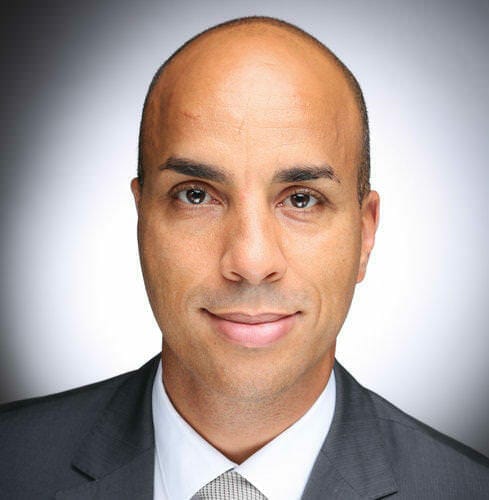For their successful, good life Information you really need: Government-funded publisher, awarded the Global Business Award as Publisher of the Year: Books, Shops, eCourses, data-driven AI-Services. Print and online publications as well as the latest technology go hand in hand - with over 20 years of experience, partners like this Federal Ministry of Education, customers like Samsung, DELL, Telekom or universities. behind it Simone Janson, German Top 10 blogger, referenced in ARD, FAZ, ZEIT, WELT, Wikipedia.
Disclosure & Copyright: Images created as part of a free collaboration with Shutterstock.
Employer branding, Generation Y & new leadership: 10 challenges of Industry 4.0
By Oliver Hofman (More) • Last updated on October 06.09.2023, XNUMX • First published on 09.06.2016/XNUMX/XNUMX • So far 6376 readers, 2670 social media shares Likes & Reviews (5 / 5) • Read & write comments
Businesses need their Executives and Employees Prepare now for Industry 4.0. The best drivers are those who take the initiative. New forms of management, strong employer branding and cooperation between the generations are required.

- What is the working world of tomorrow?
-
These are the 10 challenges in the working world 4.0
- The books on the subject (advertising)
- 1. Focusing on the needs of employees
- 2. Employer branding: attracting and retaining highly qualified employees
- 3. Accept new values
- 4. Leadership: trust rather than presence culture
- 5. The hierachies become flatter
- 6. More responsibility for employees
- 7. Way with the status striving
- 8. More flexibility
- 9. The role of leadership
- 10. More understanding and cooperation between the generations
- Conclusion
- Top books on the subject
- Read text as PDF
- Advice on success, goal achievement or marketing
- Book eCourse on Demand
- Skate eBook as desired
What is the working world of tomorrow?
Labor market experts are still divided on how that Working world looks like tomorrow, but one thing is for sure for sure: different than today. Technical innovations and a fast, mobile Internet enable new forms of work.
In the future, employees will be used more frequently in cross-company projects in which employees Company work together with service providers from other companies in decentralized teams. New forms of communication are emerging there; it becomes less about classic eMailPrograms and communicated more strongly via cross-company messengers, e.g. Skype, Whatsapp or Facebook Messenger.
These are the 10 challenges in the working world 4.0
The books on the subject (advertising)
The future work environment is characterized by flexibility, mobility and access to all enterprise applications, regardless of which device. After mechanization, electrification and computerization, the fourth step - digitization - has already begun. What are the 10 challenges that companies and employees face?
1. Focusing on the needs of employees
The vision of Work 4.0 is a stronger focus of companies on people needs their workers. This is not an end in itself, but indirectly implies that the newly gained freedom creativity and employee productivity increases.
This is the only way to maintain the innovative lead in international competition. Also, the demographic change on account carried.
2. Employer branding: attracting and retaining highly qualified employees
This is an important factor for the success of the company gewinnen and retaining a highly skilled workforce. This is where Generation Y comes into the focus of companies.
The years from 1980 to 1995 are also referred to as “digital natives”. You handle the new digital media completely naturally. They have a value system that companies have to take into account.
3. Accept new values
Generation Y is less attracted by lavish career prospects, high salaries or a large company car. Rather, owning a car is becoming less important for the generation that often lives in the city Significance. You take the train to work and, if necessary, rent a car from one of the many car-sharing portals.
The compatibility from Job and family, the opportunity to am Workplace On the other hand, to become creatively active is a meaningful activity and effectiveness of one's own person klare Requirements for companies that want to be at the forefront of the battle for Generation Y.
4. Leadership: trust rather than presence culture
Working in the digital age requires a lot of trust – from both employees and employers. Employees must trust their managers so that the "always-on" culture does not lead to managers demanding excessive work commitments and constant availability. Managers must also trust their employees, because they no longer do their work exclusively in the company Office around the corner, but from the home office or sitting on the park bench or in the evening when the children are in bed.
But how can executives inform their employees in the future, how do they ensure timely completion of activities, how do you assess employees who work in decentralized projects or in the home office?
5. The hierachies become flatter
In order to understand this, it is worth taking a look from the satellite perspective at the current major changes in the global economy. This can be explained by the enormous increase by three factors: speed, transparency and complexity. And these factors enforce a radical rethink. Why? Before, only a few had People in a company power and decision-making power.
These "doers" could control everything with their skills. Who in terms of “steel” competently was who could relaxed long term to plan. But this concentration of power on a few "all-seeers" no longer works. Because the increase in speed, transparency and complexity forces the powerful to distribute their power. Not because they want to, but because they have to because of competitive pressure. This means that hierarchies are becoming flatter and the influence of each employee is increasing.
6. More responsibility for employees
It used to be: There were a lot of “ex-workers” among a small group of decision-makers and decision-makers. In the extreme: one patriarch, many lemmings. Guide Back then it was more of a mild form of dictatorship.
And today? The entrepreneur must recognize, recognize and learn to respect the increasing power of those being led. He has to learn more and more to lead beyond hierarchies. The future responsibility lies with fifty-fifty with managers and employees and no longer with the “superiors”.
7. Way with the status striving
This change in the distribution of power between the executive and the executive has also left the winter grain principle behind. At VW there were too much status striving and therefore too much power in the hands of less. This led to far too many decision-makers having their mouths shut.
Sure: Whoever in the field of mushrooms grown in the same way Head stretches out, whose head will light cut off. The learning process for Matthias Müller should lead to the realization that he needs to empower more smart people with decision-making power and demand this responsibility in the form of results. Management today needs many sensors that detect trends in the fog banks of the fast-moving market and pass them on to the inside. A few people alone can no longer do this. That's a huge change.
8. More flexibility
It follows that more flexibility is required in every respect, for example in the Choice the place of work and the individual allocation of time. The young people, for their part, set the condition that flexibility must not be a label for total absorption. Work used to be everything. The elixir of life.
This tendency to sacrifice for work is gone today. The desire for something meaningful is increasing. And what used to be today Sinn has also changed. Life and work merge in the Gen Y era. Both sides have their justification, and often the private comes first. For this reason, companies also have to be flexible and offer the boys individual offers that fit their life plans.
9. The role of leadership
The leadership of today and tomorrow has an essential task: it must develop itself and at the same time the employees. It must promote people, lead them very individually and enable them to take on real responsibility. And to be allowed.
This is often the sticking point. Responsibility is demanded, but employees are not empowered to over budget and innovate decide. This responsibility for the company's resources calls for a new one Orientation - away from a task description that says what to do, towards a result orientation that specifies what is to be delivered.
10. More understanding and cooperation between the generations
First of all, some prejudices have to be discarded. The Generation Y representatives basically have a not so different value system. Loyalty, integrity, responsibility and... still count Lust at work. But the Definition of a successful life has changed. It is crucial for both sides to always look from where the other is looking. Gen Y is very open to change and wants to make a difference. She accepts that Work-Life-Balance no longer works according to the time clock, but that work and life are interlinked.
The young should understand that the older colleague does not want to change much shortly before retirement. This understanding already improves the cooperation immensely. Conversely, the elderly have to accept that their familiar command and control is an obsolete model. That the younger ones know and articulate what they want deserves Respect, so that constructive becomes effective.
Conclusion
The most important characteristic of a manager is and remains flexibility. You have to recognize which one Style people need and want to be guided. It is one Artto get permission from followers that they want to be evolved. This is the only way companies can today successfully be. Only in this way does everyone become the best they can be.
Top books on the subject
Discounts for your success (advertising)!
Read text as PDF
Acquire this text as a PDF (only for own use without passing it on according to Terms and conditions): Please send us one after purchase eMail with the desired title supportberufebilder.de, we will then send the PDF to you immediately. You can also purchase text series.
4,99€Buy
Advice on success, goal achievement or marketing
You have Ask round to Career, Recruiting, personal development or increasing reach? Our AI consultant will help you for 5 euros a month – free for book buyers. We offer special ones for other topics IT services
5,00€ / per month Book
Book eCourse on Demand
Up to 30 lessons with 4 learning tasks each + final lesson as a PDF download. Please send us one after purchase eMail with the desired title supportberufebilder.de. Alternatively, we would be happy to put your course together for you or offer you a personal, regular one eMail-Course - all further information!
29,99€Buy
Skate eBook as desired
If our store doesn't offer you your desired topic: We will be happy to put together a book according to your wishes and deliver it in a format of your choice. Please sign us after purchase supportberufebilder.de
79,99€Buy
Here writes for you
 Oliver Hofmann (graduate in business administration) is managing director and entrepreneur. Oliver Hofmann was born in Trier in 1971. After studying business administration in Mannheim, he switched to sales. After completing a trainee program, he held various management positions. Most recently, he was sales manager for Germany in a mobile communications company in Düsseldorf. During this time, he developed his passion for being able to make personal development possible anywhere and at any time, and he implements this with the company FairCoach.de, which was founded in 2015. Faircoach.de is an online mediation platform for demanding coaching, training and top speakers. Oliver Hofmann is married, has 3 children and lives in Cologne. In his free time, he works as a sponsor at Plan and as a sponsor at the SOS Children's Village. All texts by Oliver Hofmann.
Oliver Hofmann (graduate in business administration) is managing director and entrepreneur. Oliver Hofmann was born in Trier in 1971. After studying business administration in Mannheim, he switched to sales. After completing a trainee program, he held various management positions. Most recently, he was sales manager for Germany in a mobile communications company in Düsseldorf. During this time, he developed his passion for being able to make personal development possible anywhere and at any time, and he implements this with the company FairCoach.de, which was founded in 2015. Faircoach.de is an online mediation platform for demanding coaching, training and top speakers. Oliver Hofmann is married, has 3 children and lives in Cologne. In his free time, he works as a sponsor at Plan and as a sponsor at the SOS Children's Village. All texts by Oliver Hofmann.
11 Responses to "Employer branding, Generation Y & new leadership: 10 challenges of Industry 4.0"
-
Employer branding, #GenerationY & new leadership: 10 challenges of Industry 4.0 via @Berufebilder - Recommended contribution 1GvB0KLDQL
-
Employer branding, Gen Y: 10 challenges #chfeed - Recommended contribution MWFuva6Lzf - Recommended contribution uBilcF1wys
-
RT @Berufebilder: Employer Branding, Generation Y & New Leadership: 10 Challenges of Industry 4.0 - - Recommended contribution vggUoS0gSY
-
RT @Berufebilder: Employer Branding, Generation Y & New Leadership: 10 Challenges of Industry 4.0 - - Recommended contribution vggUoS0gSY
-
RT @Berufebilder: Employer Branding, Generation Y & New Leadership: 10 Challenges of Industry 4.0 - - Recommended contribution 0UpWYZ2L32
-
Employer branding, Generation Y & new leadership: 10 challenges of Industry 4.0 - Recommended contribution e1G8oZXTbT #karriere #leadership
-
Jarah Notter ☝️
-
Employer branding, Generation Y & new leadership: 10 challenges of ... - Berufebilder.de (Blog): Employ ... - Recommended contribution n1yx6Dhk9D
-
Employer branding, Generation Y & new leadership: 10 challenges of Industry 4.0 from Ol ... - Recommended contribution q8ut8Y8sbt #Profile #Bilding
-
Employer branding, Generation Y & new leadership: 10 challenges of Industry 4.0 ... via BERUFEBILDER - Recommended contribution XHkKUZbMAa
-
Employer branding, Generation Y & new leadership: 10 challenges of Industry 4.0 ... via BERUFEBILDER - Recommended contribution sWTtyF2ZCi















![First aid against depression Self-sabotage & fears [+ self-test] First aid against depression Self-sabotage & fears [+ self-test]](https://e68zy2pxt2x.exactdn.com/wp-content/uploads/2020/panik-depression-angst-stoerung.jpg?strip=all&lossy=1&ssl=1)



Post a Comment